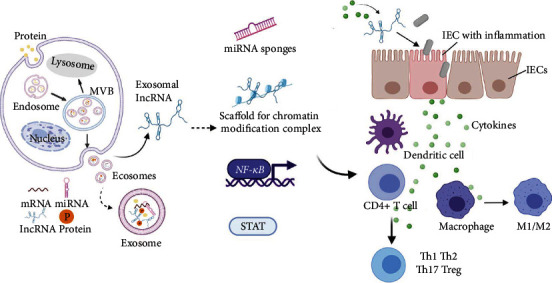Figure 2.

Formation of exosomes and mechanisms of exosomal lncRNA in the intestinal mucosal immune barrier. The formation of the exosome begins at endosomes formation and then maturates to multivesicular bodies (MVBs). MVBs either fuse with lysosomes and are degraded or fuse with the plasma membrane resulting in the release of free exosomes to the extracellular environment. Exosomes may contain various cargoes including proteins, mRNAs, lncRNAs, and miRNAs. Exosomal lncRNAs participate in the intestinal mucosal immune response by influencing the activity of transcription factors or acting as scaffolds for chromatin modification complex, miRNA sponges, translation inhibitors, or mRNA degradation signals. This leads to the regulation of various biological events including the integrity of IECs, polarization of macrophages, differentiation of CD4+ T cells, and some inflammatory signaling pathways.
